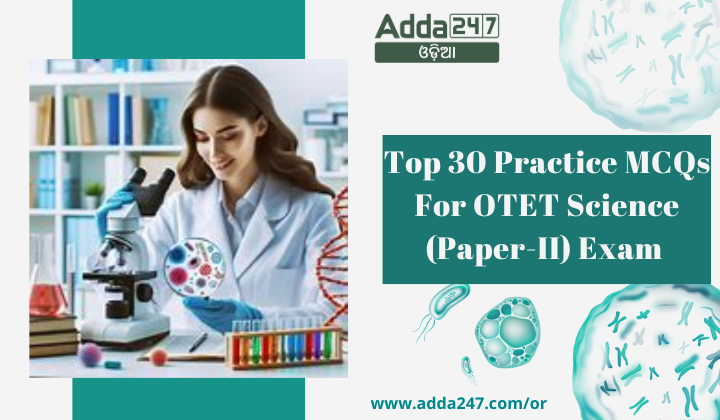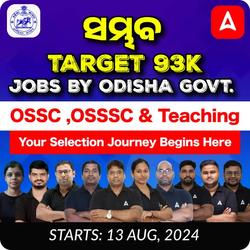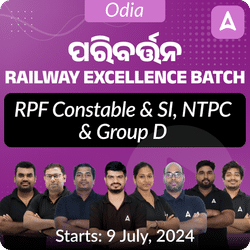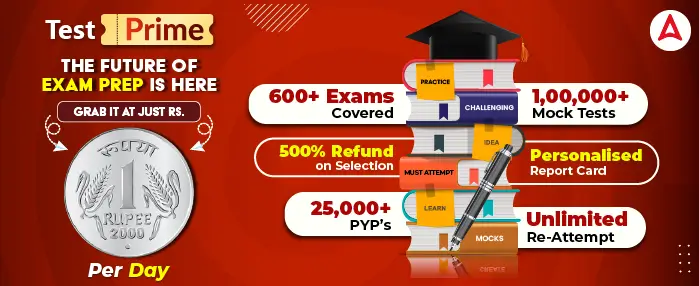Top 30 Practice MCQs For OTET Science (Paper-II) Exam
- Which of the following statements best describes the concept of “multidirectional development”?
a) Development occurs only in one direction, from birth to adulthood.
b) Development involves only gains in physical and cognitive abilities.
c) Development includes both gains and losses in different areas.
d) Development is influenced solely by genetic factors.
Answer: c) Development includes both gains and losses in different areas.
Explanation: Multidirectional development means that individuals can experience gains in some areas while experiencing losses in others throughout their lifespan. - The three general domains of development are:
a) Physical, cognitive, and environmental.
b) Cognitive, social-emotional, and environmental.
c) Physical, cognitive, and social-emotional.
d) Physical, genetic, and cognitive.
Answer: c) Physical, cognitive, and social-emotional.
Explanation: Development occurs across three primary domains: physical (body changes), cognitive (mental abilities), and social-emotional (emotions and relationships). - Which of the following best describes “plasticity” in human development?
a) Development is rigid and cannot be influenced by external factors.
b) Development can change and adapt in response to experiences.
c) Development only occurs in early childhood.
d) Development is solely determined by genetic factors.
Answer: b) Development can change and adapt in response to experiences.
Explanation: Plasticity refers to the malleability of development, indicating that individuals can change and adapt based on their experiences. - Prenatal development encompasses which of the following stages?
a) Conception through toddlerhood.
b) Conception through birth.
c) Birth through infancy.
d) Infancy through early childhood.
Answer: b) Conception through birth.
Explanation: Prenatal development begins at conception and continues until birth, covering all major body structure formations. - During which period of development do children typically begin formal schooling?
a) Infancy and Toddlerhood.
b) Early Childhood.
c) Middle Childhood.
d) Adolescence.
Answer: c) Middle Childhood.
Explanation: Middle childhood, spanning ages 6 to 11, is typically when children begin and engage in formal schooling. - What significant cognitive changes occur during adolescence?
a) Improved motor skills.
b) Understanding abstract concepts.
c) Basic language acquisition.
d) Development of gross motor skills.
Answer: b) Understanding abstract concepts. - Change the voice: “The chef cooked the meal.”
A. The meal is cooked by the chef.
B. The meal was cooked by the chef.
C. The chef has cooked the meal.
D. The meal will be cooked by the chef.
Answer: B. The meal was cooked by the chef. - Fill in the blank with the correct article: “He is ___ tallest boy in the class.”
A. a
B. an
C. the
D. no article
Answer: C. the - What is phonemic awareness?
A. Recognizing written words
B. Understanding sentence structure
C. Identifying individual sounds in words
D. Using appropriate grammar
Answer: C. Identifying individual sounds in words - Choose the correct punctuation for the following sentence: “She said I am leaving now.”
A. She said I am leaving now.
B. She said, I am leaving now.
C. She said, “I am leaving now.”
D. She said “I am leaving now.”
Answer: C. She said, “I am leaving now.” - Choose the correct meaning of the word “benevolent”:
A. Mean
B. Kind
C. Selfish
D. Angry
Answer: B. Kind - Select the correct spelling:
A. Accomodation
B. Accomadation
C. Accommodation
D. Acommodation
Answer: C. Accommodation - ଟି , ଟା , ଟେ,ଟିଏ, ଟାଏ, ଏଗୁଡିକୁ କେଉଁ ବିଭକ୍ତିର ଚିହ୍ନ?
(a) ଦ୍ବିତୀୟା
(b) ପଞ୍ଚମୀ
(c) ଚତୁର୍ଥୀ
(d) ପ୍ରଥମା
Ans. (d) ପ୍ରଥମା - ନିଲଆର୍ମଷ୍ଟ୍ରଙ୍ଗ ଚନ୍ଦ୍ରକୁ ଯାଇଥିଲେ ରେଖାଙ୍କିତ ପଦଟି କି କାରକ ?
(a) ସଂପ୍ରଦାନ କାରକ
(b) କର୍ତ୍ତାକାରକ
(c) ଅଧିକାରକ କାରକ
(d) କର୍ମକାରକ
Ans. (d) କର୍ମକାରକ - ଲାଙ୍ଗୁଳା ନରସିଂହଦେବ ବାରଶହ ବଢେଇଙ୍କ ଦ୍ବାରା କୋଣାର୍କ ମନ୍ଦିର ନିର୍ମାଣ କରାଇଥିଲେ | ଏଠାରେ ରେଖାଙ୍କିତ ଅଂଶକୁ କଣ କୁହାଯାଏ?
(a) ସମ୍ବନ୍ଧ ପଦ
(b) ପ୍ରୟୋଜକ କର୍ଭା
(c) ପ୍ରଯୋଜ୍ୟ କର୍ଭା
(d) କରଣ ପଦ
Ans. (b) ପ୍ରୟୋଜକ କର୍ଭା - ବୀପସା ବା ଦ୍ବିରୁକ୍ତି ବୁଝାଇବାକୁ କେଉଁ ବିଭକ୍ତ ହୁଏ ?
(a) ଦ୍ବିତୀୟା
(b) ପଞ୍ଚମୀ
(c) ଚତୁର୍ଥୀ
(d) ପ୍ରଥମା
Ans. (a) ଦ୍ବିତୀୟା - ଅନ୍ତେ ବାସ କରେ ଯେ-ସମସ୍ତ ପଦଟି ବାଛି ଲେଖା |
(a) ଅନ୍ତବାସି
(b) ଅନ୍ତୋବାସୀ
(c) ଅନ୍ତେବାସୀ
(d) ଅନ୍ତବାସୀ
Ans: (c) ଅନ୍ତେବାସୀ - ଯୁଧୁଷ୍ଠିର ସମାସ ନାମଟି ଲେଖ
(a) ଅଲୁକ୍
(b) ସପ୍ତମୀ ତତପୁରୁଷ
(c) ଦ୍ବିତୀୟା ତତପୁରୁଷ
(d) କର୍ମଧାରୟ
Ans: (a) ଅଲୁକ - Each angle of the rectangle is:
a. More than 90°
b. Less than 90°
c. Equal to 90°
d. Equal to 45°
Answer: c
Explanation: Let ABCD is a rectangle, and ∠A = 90°
AD || BC and AB is a transversal
∠ A + ∠ B = 180° (Interior angles on the same side of the transversal)
∠ A = 90°
So, ∠ B = 180° – ∠ A = 180° – 90° = 90°
Now, ∠ C = ∠ A and ∠ D = ∠ B (Opposite angles of the parallelogram)
So, ∠ C = 90° and ∠ D = 90°
Hence all sides are equals to 90°. - If ABCD is a trapezium in which AB || CD and AD = BC, then:
a. ∠A = ∠B
b. ∠A > ∠B
c. ∠A < ∠B
d. None of the above
Answer: a
Explanation: Draw a line through C parallel to DA intersecting AB produced at E.
CE = AD (Opposite sides)
AD = BC (Given)
BC = CE
⇒ ∠CBE = ∠CEB
also,
∠A + ∠CBE = 180° (Angles on the same side of transversal and ∠CBE = ∠CEB)
∠B + ∠CBE = 180° ( As Linear pair)
⇒ ∠A = ∠B - Rational numbers are denoted by ______
a) N
b) Z
c) Q
d) W
Answer: c
Explanation: Rational numbers are denoted by Q, which includes all numbers that can be represented as p/q where p and q are integers and q ≠ 0. - If we add, 7xy + 5yz – 3zx, 4yz + 9zx – 4y and –3xz + 5x – 2xy, then the answer is:
A. 5xy + 9yz +3zx + 5x – 4y
B. 5xy – 9yz +3zx – 5x – 4y
C. 5xy + 10yz +3zx + 15x – 4y
D. 5xy + 10yz +3zx + 5x – 6y
Answer: A
Explanation: Given, 7xy + 5yz – 3zx, 4yz + 9zx – 4y and –3xz + 5x – 2xy.
If we add the three expressions, then we need to combine the like terms together.
(7xy – 2xy) + (5yz + 4yz) – 3zx + 9zx – 3xz – 4y + 5x
= 5xy + 9yz + 3zx + 5x – 4y - The volume of a cuboid with length, breadth and height as 5x, 3×2 and 7×4 respectively is:
A. 105×7
B. 105×2
C. 105×4
D. 105x
Answer: A
Explanation: Volume of cuboid = Length × breadth × height
V = 5x × 3×2 × 7×4
V = 105 x1+2+4
V = 105×7 cubic units - What is mathematics primarily concerned with?
a) Language
b) Scientific disciplines
c) Numbers, space, and measurement
d) Creative thinking
Answer: c) Numbers, space, and measurement - Which of the following statements about metals is incorrect?
A. Metals are good conductors of electricity.
B. Metals are usually brittle at room temperature.
C. Metals have high melting and boiling points.
D. Metals are malleable and ductile.
Answer: B. Metals are usually brittle at room temperature.
Explanation: Metals are typically malleable (can be hammered into thin sheets) and ductile (can be drawn into wires), not brittle. - Where are metalloids located on the periodic table?
A. Left side
B. Right side
C. Middle
D. Top row
Answer: C. Middle
Explanation: Metalloids are located along the zigzag line between metals (left) and non-metals (right) on the periodic table. - Which of the following elements is a metalloid?
A. Sodium
B. Carbon
C. Silicon
D. Fluorine
Answer: C. Silicon
Explanation: Silicon is a metalloid located in Group 14 of the periodic table. It exhibits both metal-like and non-metal-like properties. - Which property is characteristic of non-metals?
A. High thermal and electrical conductivity
B. Malleability and ductility
C. Brittle when solid
D. High density
Answer: C. Brittle when solid
Explanation: Non-metals are typically brittle when solid and poor conductors of heat and electricity. - Which statement about metals, non-metals, and metalloids is correct?
A. Metals always gain electrons during chemical reactions.
B. Non-metals are located on the left side of the periodic table.
C. Metalloids are neither conductors nor insulators.
D. Metals tend to lose electrons easily.
Answer: D. Metals tend to lose electrons easily.
Explanation: Metals tend to lose electrons to form positive ions during chemical reactions, making them good conductors of electricity. - What are valence electrons?
a. Electrons in the innermost shell
b. Electrons in the outermost shell
c. Electrons in the nucleus
d. Electrons in the middle shell
Answer: b. Electrons in the outermost shell
Explanation: Valence electrons are those electrons in the outermost shell of an atom. They determine the chemical properties and reactivity of the element.

